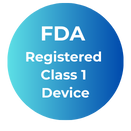DIABETES Management
Managing diabetes can be challenging, but dealing with injection pain doesn't have to be. DigiVibe provides comfort for daily diabetes care with innovative vibration technology.
Learn more about us
How DigiVibe Compares to Other Solutions
| Feature | DigiVibe | Traditional Numbing Cream | Ice Pack |
|---|---|---|---|
| Pain Reduction | |||
| Ease of Use | |||
| Effectiveness |
For more information on diabetes management, visit American Diabetes Association.
DIGIVIBE for Diabetes Care
Experience pain-free diabetes management with our innovative technology designed specifically for individuals with diabetic neuropathy and sensitive skin conditions.
Neuropathy Relief
Specially designed vibration patterns that reduce pain and discomfort associated with diabetic neuropathy.
Blood Flow Improvement
DigiVibe technology promotes better circulation in extremities, helping to manage symptoms of poor peripheral circulation.
Pain-Free Testing
Reduce the pain associated with glucose monitoring and insulin injections through targeted vibration therapy.
CLINICALLY VALIDATED Technology
DigiVibe's technology has been extensively tested and proven effective in clinical settings. Our specialized vibration patterns work by activating non-pain nerve fibers, effectively blocking pain signals before they reach the brain.
This gate control theory of pain management provides a drug-free, non-invasive solution for individuals managing diabetes daily.

Take Control of Your Diabetes Management Today
Join thousands of satisfied users who have transformed their diabetes care routine with DigiVibe's cutting-edge technology. Experience comfort and confidence in your daily health management.
Explore DigiVibe Solutions
DIGIVIBE PAIN RELIEF DEVICE
The Digivibe is a cordless, handheld, and easy-to-use device designed to help both adults and children overcome the fear and discomfort of needle procedures.
Perfect for vaccinations, finger pricks, insulin injections, weight loss management
- Digivibe device
- Lancing device
- Sonic tip
- AA Lithium battery


